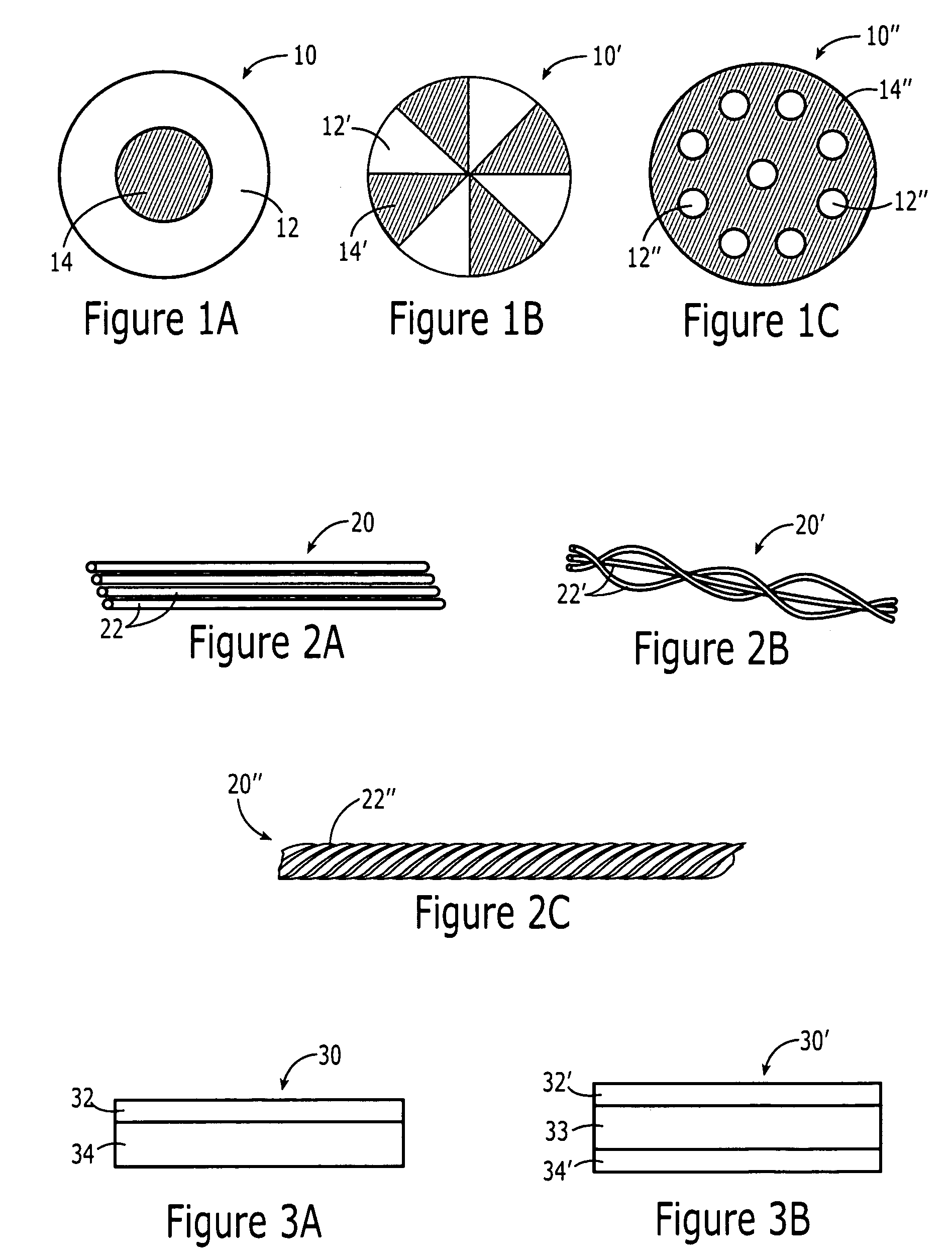Flame retardant multicomponent articles
a multi-component, flame retardant technology, applied in the field of multi-component articles, can solve the problems of difficult manipulation of materials to form textile articles, poor wear resistance, and poor wear resistance, and achieve the effects of reducing volatility, reducing molecular weight, and reducing weigh
- Summary
- Abstract
- Description
- Claims
- Application Information
AI Technical Summary
Benefits of technology
Problems solved by technology
Method used
Image
Examples
example 1
[0075]An intumescent layer is created on a solid object such as glazing by coating the object with a layer of a phenoxy resin, such as a phenoxy resin commercially available from InChem Corp. under the trade name InChemRez®, followed by a layer of citric acid loaded olefin (such as a maleated polypropylene wax, commercially available from Eastman Chemical under the trade name Epolene®). The citric acid is commercially available, for example, from various sources such as FMC Corp., Hercules, BP Chemical, and Celanese Americas Corp. The citric acid loaded polyolefin layer can also include additional additives, such as glass or mica flakes, to impart integrity to the char layer. All reactive agents are substantially uniformly incorporated into the fiber for maximum efficacy at controlled costs.
example 2
[0076]An extension of example 1 above is as follows. The inventors have found that phosphorous-based flame retardants such as resorcinol bis-diphenyl phosphate (RDP) can be more effective when used with a polyester, such as polyethylene terephthalate (PET), having substantially no cyclohexanedimethanol (“CHDM”) units, or isophthalic units, and that the effectiveness of such phosphorous based flame retardants work decreases with increasing CHDM content. Conversely, CHDM copolyesters can crystallize less readily and can be more suitable for glazing. RDP can increase crystallization rates so one can alter the desired balance of CHDM vis-à-vis crystallinity on one hand and burning on the other.
[0077]Thus the invention can include a multi-layer coextrusion with PET (or APET, a high molecular weight PET, which can be purchased as pellets from Eastman Chemical Company under the name VORIDIAN PET 9921 or in sheet form as PACUR™ 9921) on the outside and a heavily loaded RDP (up to 20 weight ...
example 3
[0079]As another non-limiting example, polypropylene staple fiber and / or filaments can be produced that include up to 10% of a phenoxy resin. Other polypropylene staple fibers and / or filaments can also be produced that include up to 10% citric acid. The polypropylene staple fibers and / or filaments can be combined using any of the techniques known in the art to form a multicomponent fiber bundle or yarn exhibiting flame retardant properties. As an example, staple fibers can be twisted together to form a spun yarn. Alternatively, filaments can be laid together without twist to form a zero-twist yarn or with some degree of twist.
PUM
| Property | Measurement | Unit |
|---|---|---|
| temperature | aaaaa | aaaaa |
| temperatures | aaaaa | aaaaa |
| length | aaaaa | aaaaa |
Abstract
Description
Claims
Application Information
 Login to View More
Login to View More - R&D
- Intellectual Property
- Life Sciences
- Materials
- Tech Scout
- Unparalleled Data Quality
- Higher Quality Content
- 60% Fewer Hallucinations
Browse by: Latest US Patents, China's latest patents, Technical Efficacy Thesaurus, Application Domain, Technology Topic, Popular Technical Reports.
© 2025 PatSnap. All rights reserved.Legal|Privacy policy|Modern Slavery Act Transparency Statement|Sitemap|About US| Contact US: help@patsnap.com

